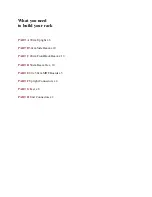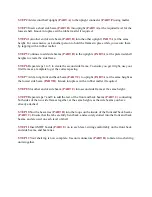
STEP 2
Add second half upright
(PART A)
to the upright connector
(PART F)
using mallet.
STEP 3
Insert a short side beam
(PART B)
into upright
(PART A)
at the required level for the
lowest shelf. Knock into place with a rubber mallet if required.
STEP 4
Join other end of side beam
(PART B)
into the other upright
(PART A)
at the same
height. For convenience, ask another person to hold the frames in place while you secure them
by tapping with a rubber mallet.
STEP 5
Continue to add side beams
(PART B)
to the uprights
(PART A)
at the preferred shelf
heights to create the side frame.
STEP 6
Repeat steps 1 to 5 to create the second side frame. To ensure you get it right, use your
first frame as a template to get the correct spacing.
STEP 7
Add a long front and back beam
(PART C)
to upright
(PART A)
at the same height as
the lowest side beam
(PART B)
. Knock into place with a rubber mallet if required.
STEP 8
Slot other end of side beam
(PART C)
into second side frame at the same height.
STEP 9
Repeat steps 7 and 8 to add the rest of the front and back beams
(PART C)
connecting
both sides of the two side frames together, at the same heights as the side beams you have
already attached.
STEP 10
Slot the beam ties
(PART D)
into the loops on the inside of the front and back beams
(PART C)
. Ensure that the tabs are fully bent back, and securely slotted into the front and back
beams, and are used on each level of shelf.
STEP 11
Insert MDF boards
(PART E)
on to each level, sitting comfortably on the front, back
and side beams, and beam ties.
STEP 12
Your shelving is now complete. Use unit connectors
(PART H)
to fasten two shelving
units together.
Summary of Contents for Garage Shelving Units
Page 2: ......






















